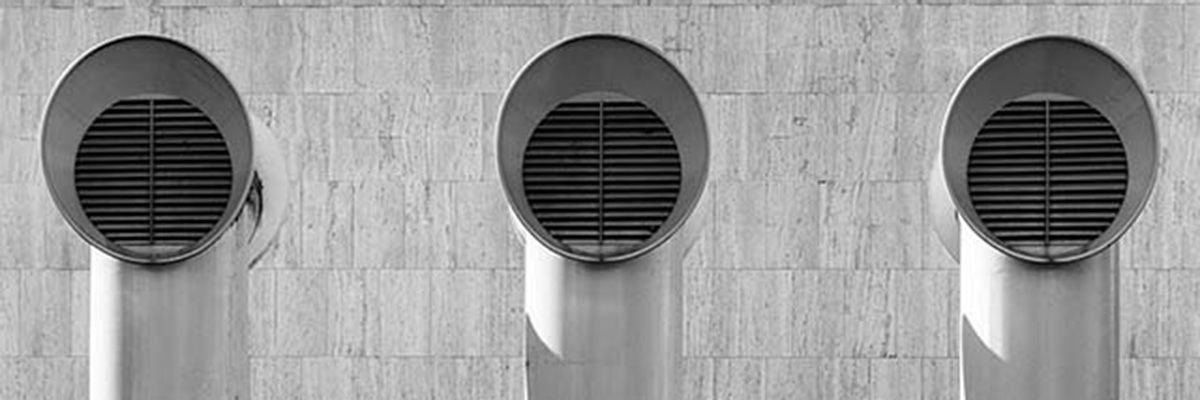
How does HVAC optimization boost your bottom line?
In most facilities, HVAC systems are the largest individual sources of energy consumption and, in turn, drivers of cost. Yet most HVAC systems aren’t optimized to run efficiently. That’s an uncomfortable problem for building users and an expensive one for facilities managers. Something needs to be done.
HVAC – The cost of ignoring inefficiency is high
HVAC optimization can have a dramatic impact on your bottom line. Here’s why. When you consider that in a typical building, around 50% of annual electricity costs and 70% of total energy is spent powering heating and ventilation systems, the price of running those systems sub-optimally ought to be clearly problematic. Yet for many, it’s also an accepted, if overlooked, reality.
Make no mistake, the cost of such inefficiency is high; thousands of dollars are spent on energy that could be put to better use by the facility or building manager. But it needn’t be like this. The benefits of optimizing HVAC are as numerous as they are obvious and it’s not impossible to do.
The benefits? Foremost among them:
Reduced downtime
This not only means the delivery of more consistent performance but also extending equipment life and thereby improving system ROI.
Lower energy consumption
An optimized system can typically perform over 20% more cost effectively, meaning the time to payback on optimization technology is relatively brief, with improved system performance immediate.
Extended equipment lifespan
More effectively managing run-time means less maintenance and reduced wear and tear on HVAC system components.
Better quality of indoor environment
Energy savings in an optimized system don’t come at a cost to comfort. In fact, they deliver better humidity control and require less energy to deliver the expected system benefits.
Simplified system operation
An optimized system enables more intuitive sequencing of equipment as well as delivering improvements in system reliability and control.
In short, it’s easy to see how an optimized system becomes a better system.
The good news: HVAC can be optimized, and it’s not hard to identify where upgrades can occur
If we look under the HVAC hood, it’s also easy to identify where addressable inefficiencies exist. For instance, improperly calibrated thermostats – as little as 1 or 2 degrees out – can radically affect the energy usage of an HVAC system.
Another example? Failures of system control. Remember, HVAC controls account for the operation of the system when it’s not needed as well as when it is, so a system that’s operating when it’s not required (for instance, when the business is closed) is wasting both money and energy.
Again, all these changes benefit the bottom line.
What to do next?
Having established that optimizing HVAC systems delivers significant energy savings and lower operational costs what steps need to be considered and taken? Better basic maintenance and/or new energy-efficient equipment alone aren’t the answer.
The first and most important step involves an exhaustive examination of the entire legacy HVAC system focusing on how the sum of the parts run together rather than on the individual components. This audit provides the foundation for optimization to succeed. Beyond it, the subsequent process requires three key areas be kept in mind.
Pursue accuracy in measurement
Equipment of any kind can’t be optimized if it’s performance can’t be accurately measured. So, the launchpad for bettering an HVAC system’s efficiency is understanding its present input and output parameters. When you have this information, you can establish critical, data-based controls. That’s why we gather all of this information before fitting our DrivePak solution – which ensures your HVAC motor operates with optimized settings, providing output when required – and reducing it when it’s not.
Be driven by the big picture
Optimizing HVAC requires being system- rather than component-led (see above). That’s because efficiencies are lost when energy-efficient equipment is installed without considering the performance of the entire system. Individual system components have a knock-on effect on each other’s performance. Of course, see point one: accurate measurements taken before new installations will help determine if this happens.
Understand that the optimization process is dynamic, not static
Optimization isn’t a procedure with a single beginning and end. Rather, maximizing energy efficiency is the result of a continuous and dynamic process. Ultimately, this means decisions based on real-time data are required for maximum optimization to be achieved. Your technology has to be able to support that.
How does HVAC optimization boost your bottom line? Answer: significantly
We’ve touched in this blog on some of the benefits, drivers, and procedures that surround the question of whether and how to optimize your HVAC system. The benefits in both lower costs and increased efficiencies of grasping the optimization nettle are impossible to ignore.
Or course, there’s a great deal more to learn about the subject. If you’d like to take a deeper, expert dive, NexRev has an established track record of unlocking the power in facility and energy management data with over half a million connected devices across North America. Best of all, our solutions can be retro-fitted to existing units, extending their life and generating immediate cost savings – boosting the bottom line, while help you to meet sustainability goals by cutting your carbon footprint.
NexRev’s team of experts are focused on helping deliver more with your budgets, infrastructure, and assets to create sustainable savings in operations and energy, reducing your risk and increasing operational confidence. If you’re interested in learning more about how variable frequency drives can help your enterprise reduce energy costs, please send an email to: